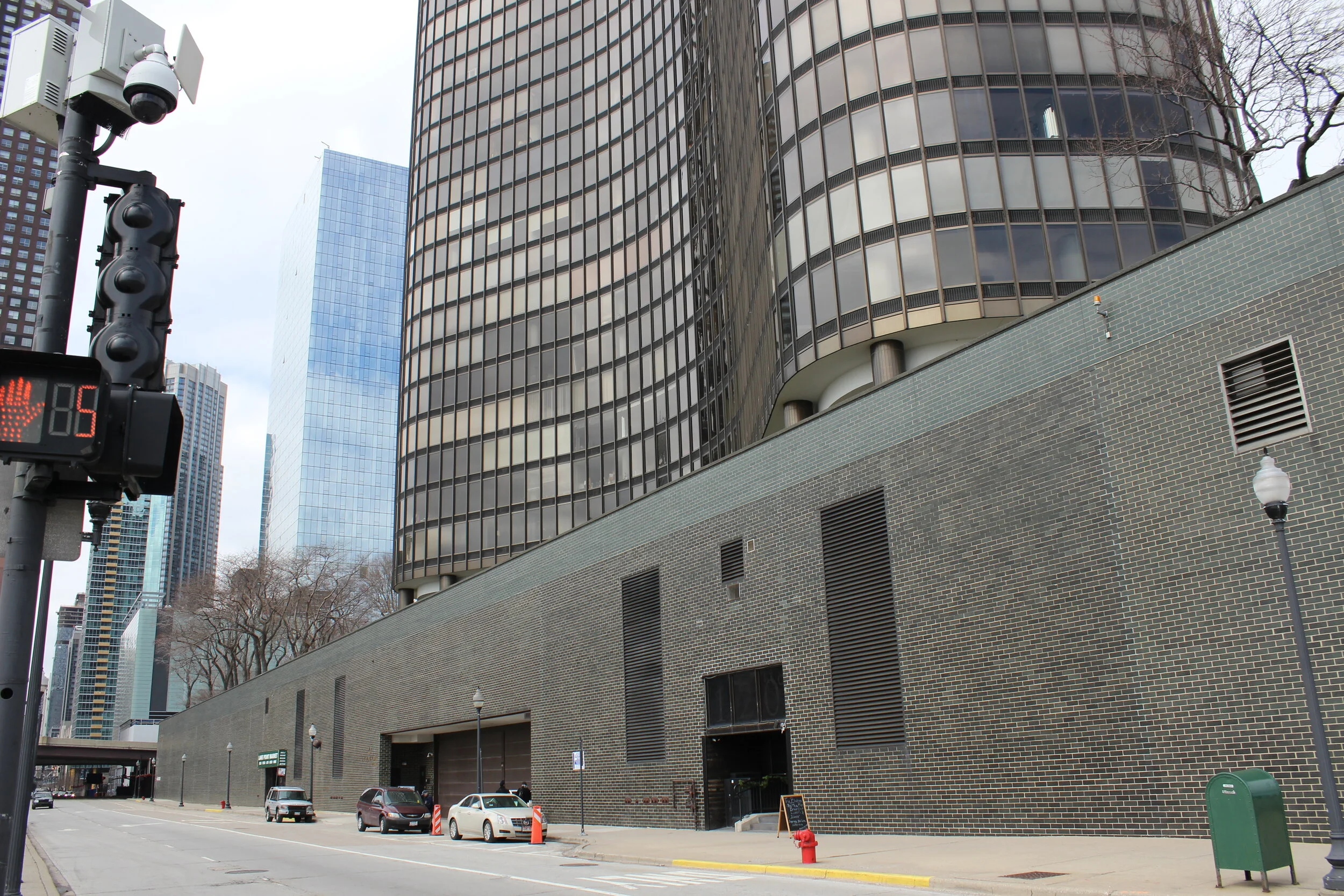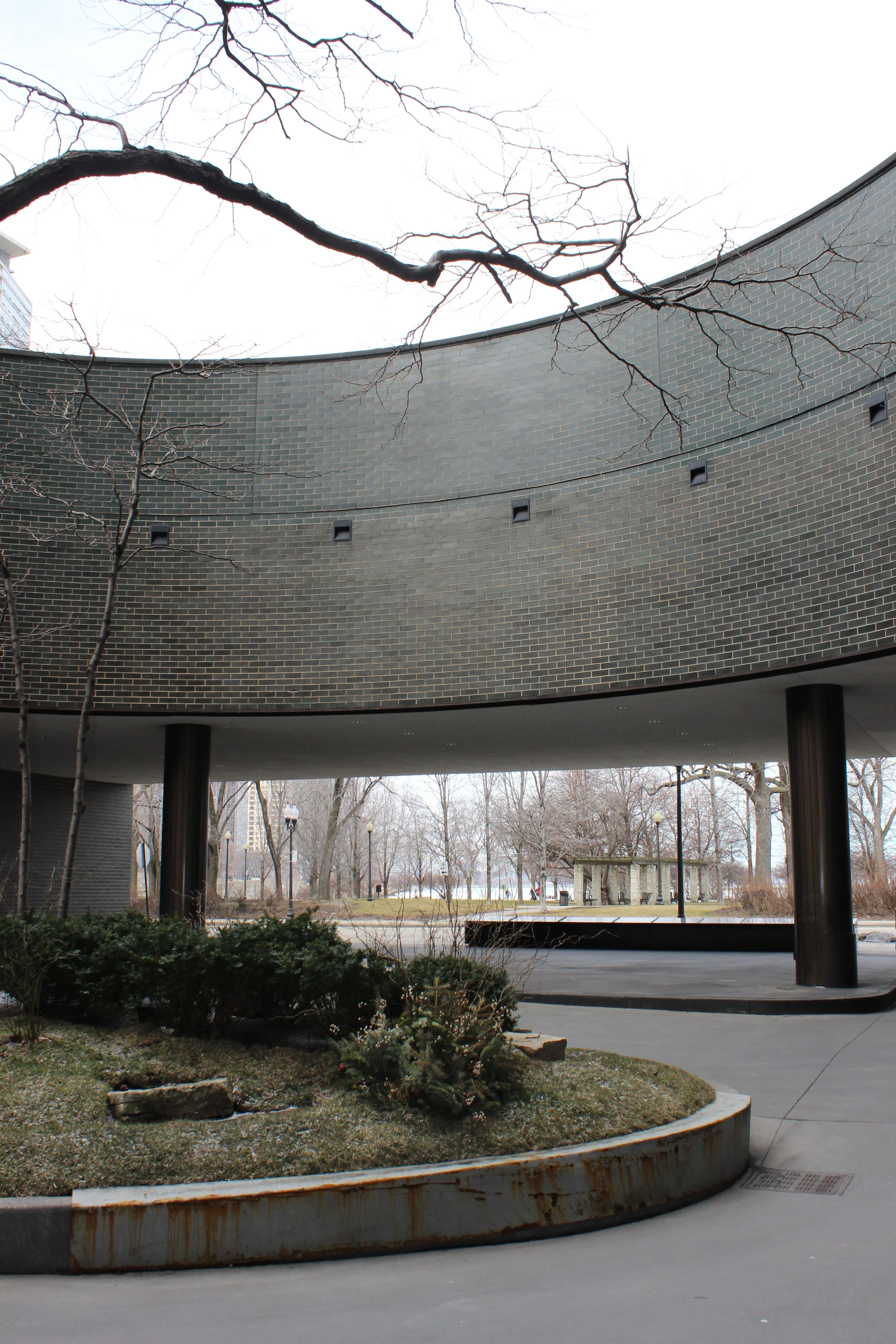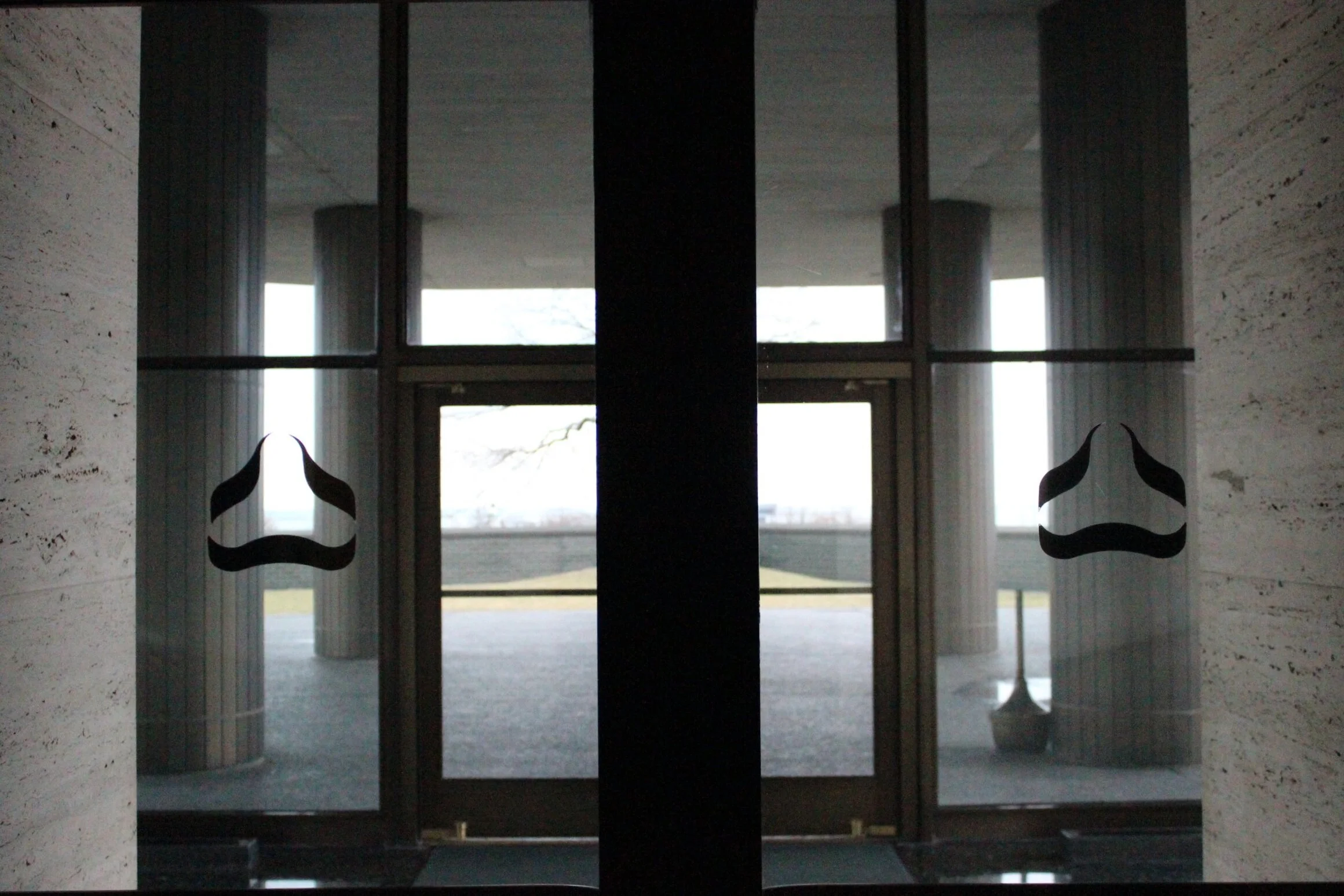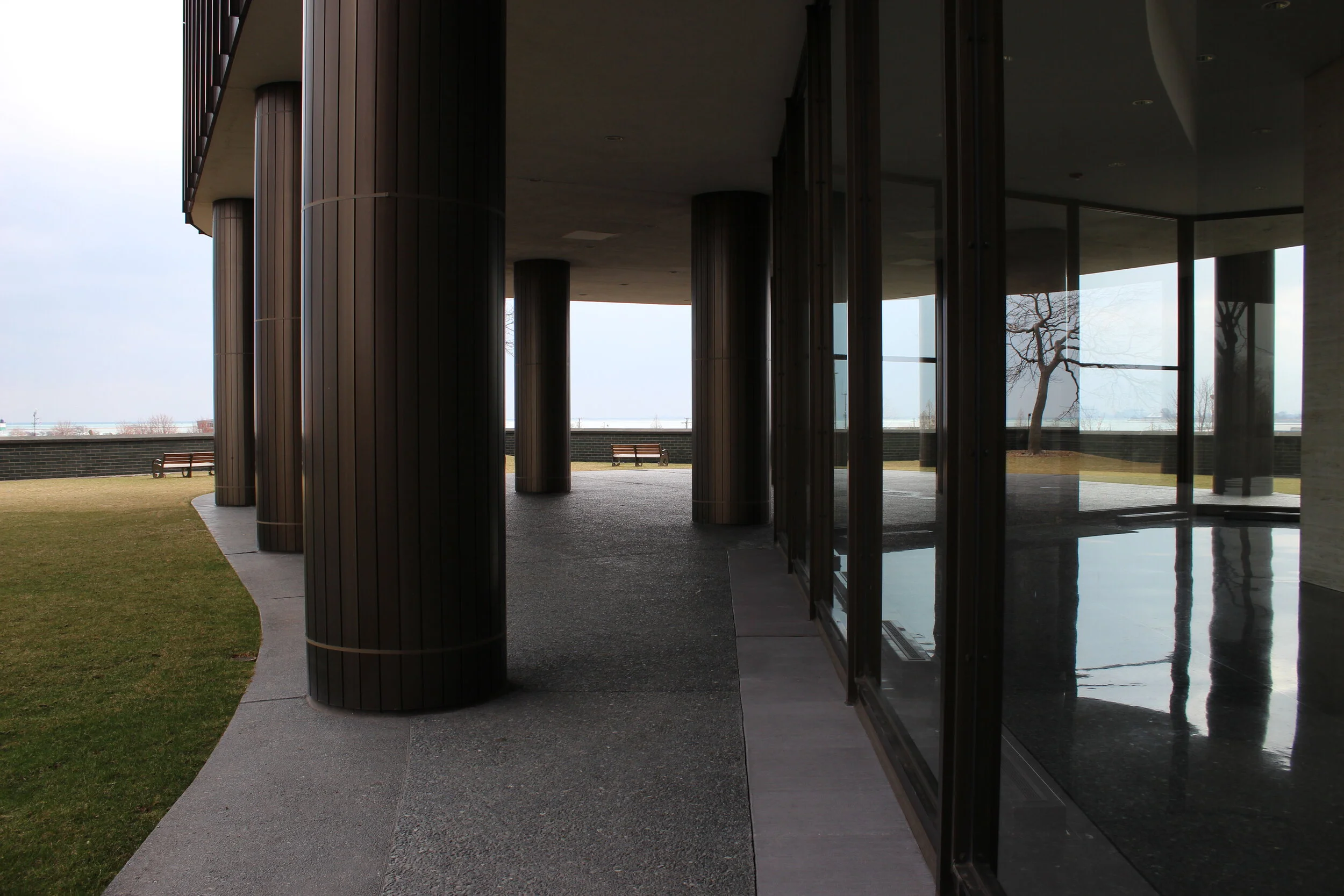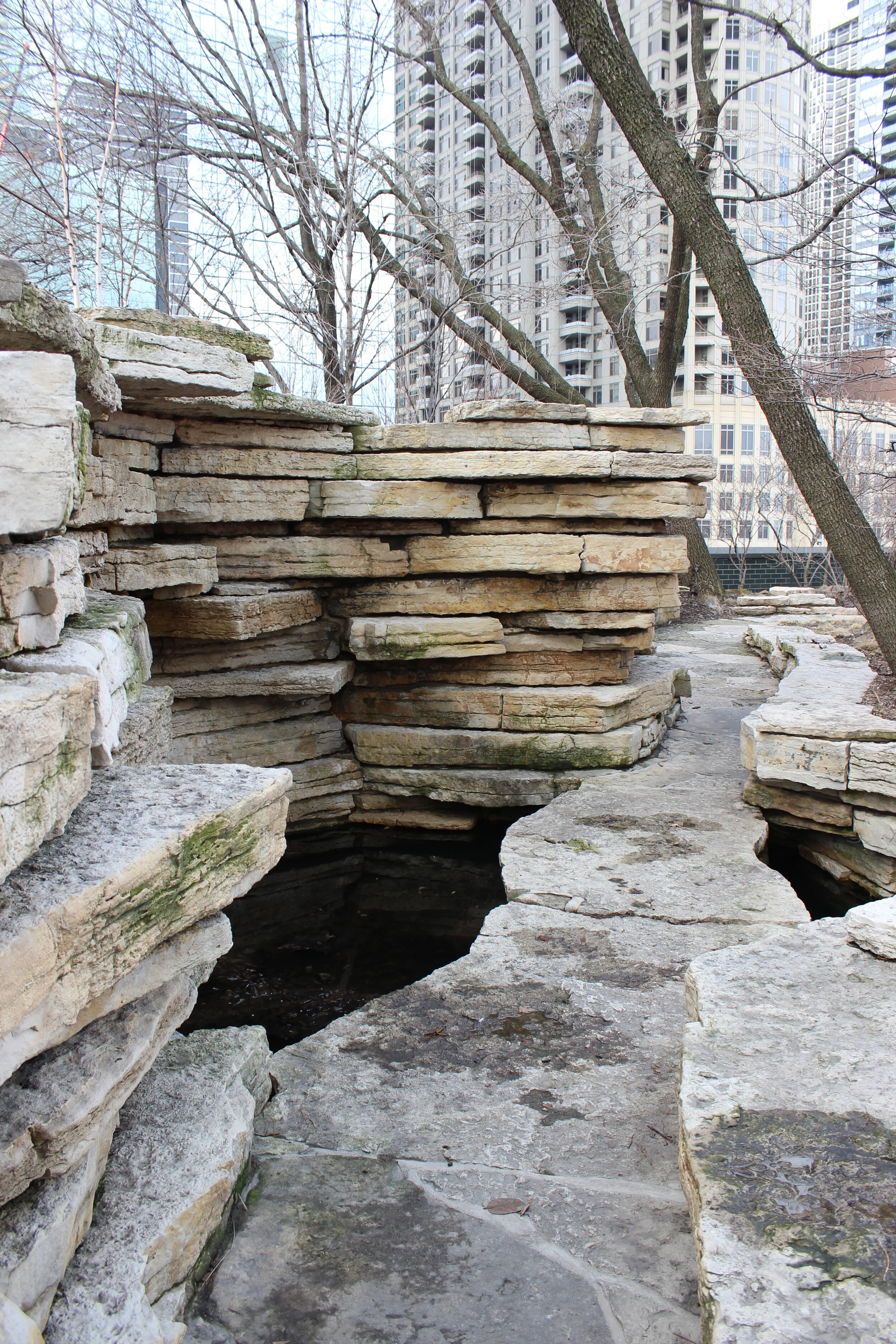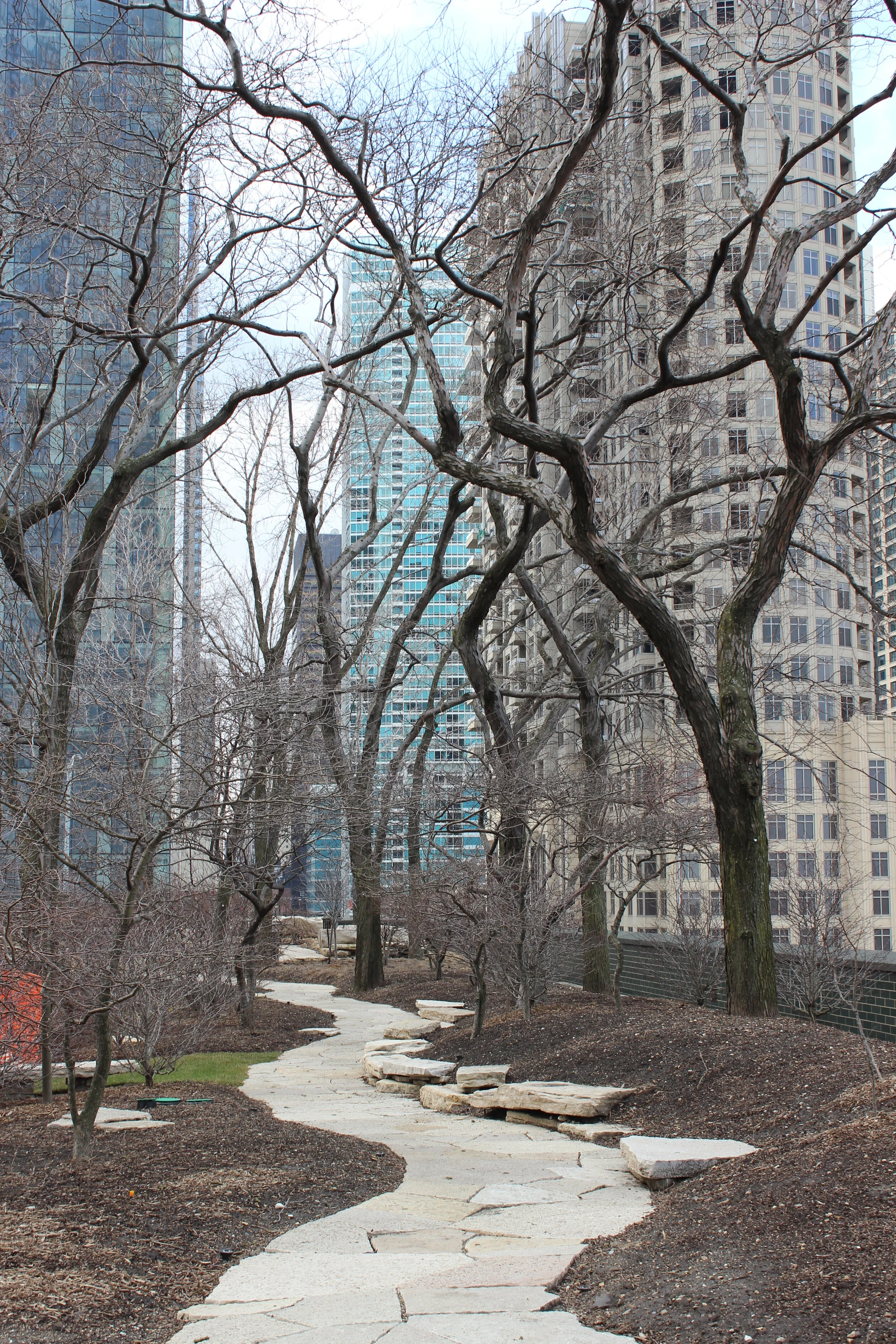Oprah and other Secrets of Lake Point Tower
“Isn’t that where Oprah lives?” I hear this question all the time on boat tours in reference to Lake Point Tower. The answer is NO, she never lived there, for goodness’ sake! She did visit the restaurant with the stunning views up at the top, called Cité, and supposedly quite frequently, but no, she never lived there.
Another common misunderstanding I hear on architecture tours in Chicago is that this was the “only building built to the east of Lake Shore Drive due to a legal loophole regarding air rights” etc., etc. We’ve all heard the tale. And while it is true that its developer, Charles H. Shaw, found a temporary loophole (and was definitely helped by Mayor Richard J. Daley) in order to develop this project in the mid-1960s, what is NOT true is that it was the “only building built to the east of Lake Shore Drive,” nor was it the only building to identify and profit from said loophole. Long story short, the city had — for many, many years, and with many, many dollars from Aaron Montgomery Ward, among other civic activists — protected Chicago’s lakefront from private development. The lakefront should be kept “forever open, clear, and free” of private interests, ensuring public accessibility and enjoyment. The fact that you can drive just north of Chicago into palpably rich suburbs like Winnetka, and you are physically prohibited from enjoying one of the world’s greatest lakes simply because you aren’t as rich as these residents are in order to buy and privatize that view… yeah, it makes me quite proud of Chicago’s long-standing protection of its lakefront for public use. For all its corrupt politics — and it’s got a LOT — Chicago has at least done right by its citizens for the most part when it comes to public accessibility to green spaces and to the lake itself.
That said, a developer is a developer is a developer. If a zoning policy is put in place in 1964 that at once admirably upholds the “public accessibility” priority of our lakefront, but that also slyly omits the historical requirement that development near the mouth of the river be for either harbor or train (i.e., industrial) use, then savvy developers are going to rush right through that loophole and develop the most luxury-type residences that they possibly can to capitalize on the moment. But Lake Point Tower wasn’t the only project to rush through on that temporary green light; indeed, it wasn’t even the first. Outer Drive East (now known as 400 East Randolph), developed by Jerrold Wexler, rushed through first, and was finished in 1963. Then came Lake Point Tower, finished in 1968. And even then, the loophole wasn’t fixed: Harbor Point rushed through in 1972. And keep in mind this was all before the straightening of Lake Shore Drive’s problematic S-curve in the 1980s. So after the S-curve was straightened, Lake Point Tower was the only loophole profiteer that remained to the east of Lake Shore Drive. But that story is WAY too long to explain in 15 seconds on a boat tour, so it gets shortened (and usually misunderstood) by tour guides to be “the only building built to the east of Lake Shore Drive,” and then gets layers of myth as to how it achieved such status on top of that.
1) Outer Drive East (1963); 2) Lake Point Tower (1968), and 3) Harbor Point (1972).
Lake Shore Drive’s S-curve before 1980s straightening.
Oprah and loophole stories aside, this building is certainly one of the best-known in the city. Anyone who travels up or down Lake Shore Drive sees it; anyone who visits Navy Pier sees it. It sticks out geographically and stylistically: it is a uniquely curved version of the regularly straight-lined Modernist buildings of the Miesian school. And in fact, Mies essentially designed this building himself in the early 1920s for a triangular patch of land in Berlin, but from what I understand, the technology needed to bend steel did not exist at the time, and so the design got filed away with other would-be buildings. Decades later, a couple of Mies’ own students — John Heinrich and George Schipporeit, working under the name “Schipporeit and Heinrich” — brought Mies’ design to life. Finishing this building in 1968, they built it here in Chicago rather than its intended home of Berlin, as Chicago was Mies’ adopted home after fleeing Nazi Germany in the late 1930s. They also tripled its planned height, supposedly as a tribute to their teacher. Interesting, it seems, that a tribute to the man who championed unadorned, rectilinear facades should be so beautifully curvilinear!
The best part of this building, though, is a well-kept secret of its residents: the 3rd floor terrace. I’m sure that the millions of Navy Pier visitors who pass this building every year have no idea that there is a 2.5-acre park lying just overhead, complete with playground, pond, waterfalls, and gorgeous views of the city and the lake. For the architecture geeks among us, the terrace is not only a stunning study in lines — curved lines, straight lines, high lines, low lines — but also in space. The design — a truly Modernist play of mass and space — pits solidity against emptiness, opacity against transparency: the form and substance are indeed there, but tempered with an ethereal, elegant effect achieved from the combination of windowed corridors, weeping willows, reflective waters, low walls, and the pleasant surprise of a sneak peek through a giant hole in the terrace to the ground floor below.
I used to work for a boat tour company who had offices in this building, and as my office was windowless, located in the base of the building below the landscaped terrace, I would look forward to taking breaks to enjoy the views, the breeze, and a quiet moment to myself in what I liked to think of as my “secret garden.” And I miss that. But one of the good things about having a walking tour company is that I’ve had plenty of opportunity to find many more “secret gardens” throughout Chicago by exploring on foot. So although I miss Lake Point Tower’s solitude and views, I’ve made up for the loss with many other beautiful and often overlooked spots throughout the city.


